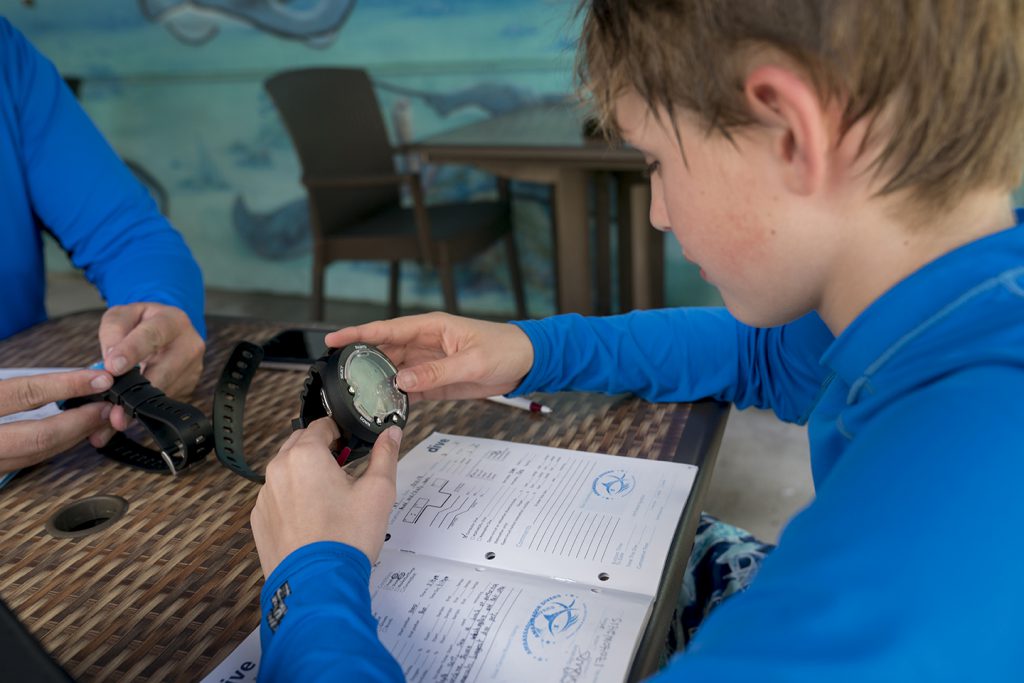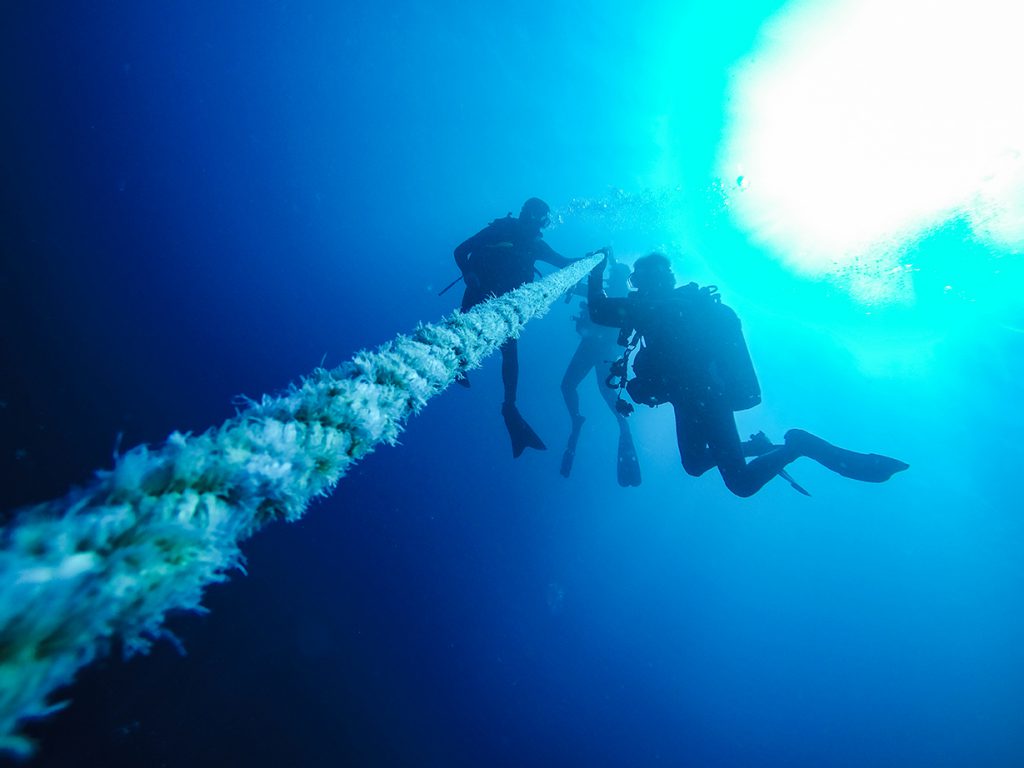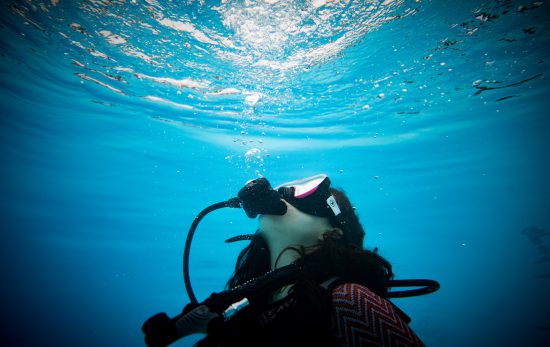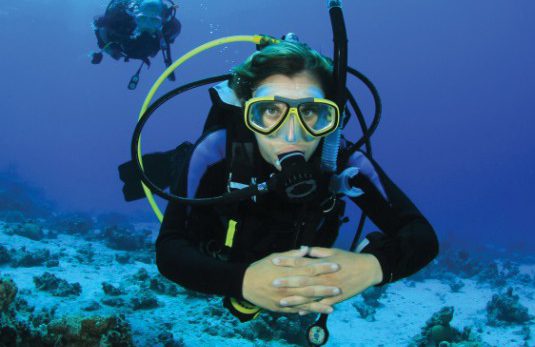Descending and ascending are often overlooked as critical diving skills, usually outshone by the need for perfect trim and buoyancy once the dive is underway. However, being able to descend and ascend slowly and safely, while maintaining good positioning, is something that new divers can struggle with, and should be practiced just like any other skill.
Take note
Use your logbook to keep track of how much weight you’re using on each dive, and whether it was salt or freshwater. It will also help to keep an exact record of the kind of equipment you used: steel or aluminium tank? 10 litre, 12 litre, or 15? Short or long wetsuit? 3mm, 5mm, or 7mm? All of these things contribute to accurately estimating the amount of lead you’ll need on your next dive. Make sure you’re writing down as many details as you can, as this will help you and your next dive professional to add or subtract some weight based on your previous dives.

Aim low
Many divers don’t realise that it should actually be an effort to get down. If you’re dropping like a lead balloon on your descents, chances are you’re over weighted. It’s always good to carry as little weight as possible, particularly for shore dives or challenging diving environments (who wants to carry an extra 10kg up a beach, when they could be carrying eight? or six?) Descending slowly and then maintaining your buoyancy throughout the entire dive – safety stop and all – are serious skills to master, but once you have, you’ll find yourself shedding the pounds.
Conduct a proper weight check
If anything has changed since your last dive – such as diving environment, exposure suit, or even body mass – conduct a proper weight check before your dive. Properly weighted, you should float at eye level holding a normal lungful of air with an empty BCD. Take care not to kick or scull while you do your check; this will only keep you near the surface. Let yourself hang vertically in the water column with minimal movement, and then exhale fully. If you drop like a sack of bricks, you need to take some weight off. Ideally, you’ll start to sink slowly, giving yourself plenty of time to equalise early and often on the way down.

Control your descent
Your descent should look similar to your weight check as you fully deflate your BCD and hold still and vertical- no kicking! Empty your lungs completely. Make any inhales as small as possible, and emphasise the exhales, so that your out-breaths are much longer and stronger than your in-breaths. As you feel yourself start to freefall, use your abs to bring your upper body into a face down, horizontal position so that the weight of the tank can’t pull you over backwards. Squeeze your glutes and push your belly out to bring your hips and legs up behind you, and add some air back into your BCD to avoid contacting the bottom.
It takes time in the water to really get comfortable and realise what works for you, so it’s worth experimenting not just with the amount of weight you carry, but how you carry it too. Take time to get good at ascents and descents, and you’ll find that the rest of your dive gets easier too! Take the PADI Peak Performance Buoyancy course to further improve your buoyancy skills.
If you have your Open Water Diver certification but had forgotten some of the skills associated with ascending and descending, it may be time to ReActivate your diving skills.
About the Author
Originally from the UK, Liz Wilkie has been working, writing, and diving her way around Asia, Australia, and Europe since 2010, and is currently a PADI MSDT in Cyprus. She’s trained in Thailand, the Philippines, and Indonesia, and teaches English Language during the off-seasons. You can find out more about Liz here and here


